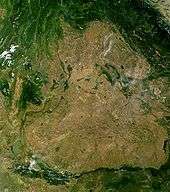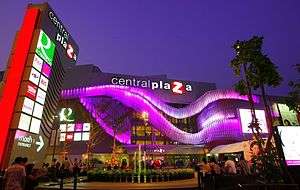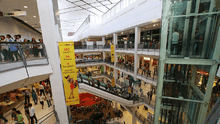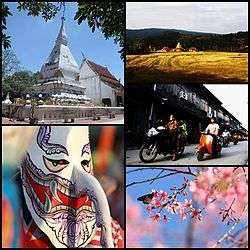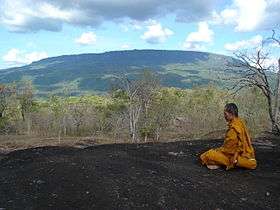Isan
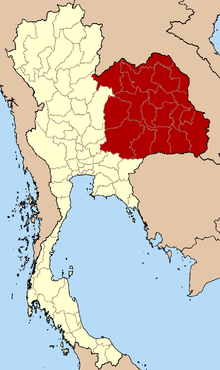
Isan (Isan/Thai: ภาคอีสาน [pʰâːk.ʔiːsǎːn]; also written as Isaan, Isarn, Issarn, Issan, Esan, or Esarn; from Pali ऐशान aiśāna or Sanskrit ऐशान aiśāna "Northeast")[1] consists of 20 provinces in the northeastern region of Thailand. Isan is Thailand's largest region, located on the Khorat Plateau, bordered by the Mekong River (along the border with Laos) to the north and east, by Cambodia to the southeast and the Sankamphaeng Range south of Nakhon Ratchasima. To the west it is separated from northern and central Thailand by the Phetchabun Mountains.
Identity
Since the beginning of the 20th century, northeastern Thailand has been generally known as Isan, while in official contexts the term phak tawan-ok-chiang-nuea (ภาคตะวันออกเฉียงเหนือ; "northeastern region") may be used. The term "Isan" was derived from Isanapura, the capital of the Chenla Kingdom. The majority Lao-speaking population of the region distinguish themselves not only from the Lao of Laos but also from the central Thai by calling themselves khon Isan or Thai Isan in general. However, some refer to themselves as simply Lao, and academics have recently been referring to them as Lao Isan[2] or as Thai Lao, with the main issue with self-identification as Lao being stigma associated with the Lao identity within Thai society.[3] The Khmer-speaking minority and the Kuy people ("Soui"), who live in the south of Isan, speak Austroasiatic languages and follow customs more similar to those of Cambodia than to those of the Thai and Lao, who are Tai peoples.[4]
Language
The main language is Isan, which is a dialect of the Lao language. Currently written with the Thai alphabet (instead of the slightly different Lao alphabet), Isan belongs to the Chiang Saeng and Lao–Phutai language groups, which along with Thai are members of the Tai languages of the Tai–Kadai language family. Thai is also spoken by almost everyone and is the language used in education. Khmer, the language of Cambodia, is widely spoken in areas along the Cambodian border: Buriram, Surin, and Sisaket. The Lao Isan people are aware of their Lao ethnic origin, but Isan has been incorporated as a territory into the modern Thai state through over one hundred years of administrative and bureaucratic reforms, educational policy, and government media. Despite this, since the election of Thaksin Shinawatra as prime minister in the January 2001 elections, the Lao Isan identity has reemerged, and the Lao Isan are now the main ethnolinguistic group involved in the pro-Thaksin "Red Shirt movement" of the United Front for Democracy Against Dictatorship.[5] Several Thai prime ministers have come from the region.
Prominent aspects of Isan culture include mor lam (Thai: หมอลำ), an indigenous folk music, muay Thai (Thai: มวยไทย) boxing, cock fighting, and celebratory processions (Thai: กระบวน). Isan food, in which glutinous rice (Thai: ข้าวเหนียว, khao niao) and chili peppers are prominent, is distinct from central Thai cuisine, though it is now found throughout the kingdom. Sticky rice is a staple of northeastern cuisine and it accompanies most meals.
History

Isan has a number of important Bronze Age sites, with prehistoric art in the form of cliff paintings, artifacts and early evidence of rice cultivation. Iron and bronze tools such as those found at Ban Chiang may predate similar tools from Mesopotamia.
The region later came under the influence of the Dvaravati culture, followed by the Khmer Empire. The latter built dozens of prasats (sanctuaries) throughout Isan. The most significant are at Phimai Historical Park and Phanom Rung Historical Park. Preah Vihear Temple was also considered to be in Isan, until the International Court of Justice in 1962 ruled that it belonged to Cambodia.
After the Khmer Empire began to decline in the 13th century, Isan was dominated by the Lao Lan Xang kingdom, which had been established by Fa Ngum. Due to a scarcity of information from the periods known as the dark ages of Cambodia, the plateau seems to have been largely depopulated. There were few if any lines of demarcation, for prior to the 19th century introduction of modern mapping, the region fell under what 20th century scholars called the "mandala system". Accordingly, in 1718 the first Lao mueang in the Chi valley — and indeed anywhere in the interior of the Khorat Plateau — was founded at Suwannaphum District (in present-day Roi Et Province) by an official in the service of King Nokasad of the Kingdom of Champasak.[6]
The region was increasingly settled by both Lao and Thai emigrants. Thailand held sway from the 17th century, and carried out forced population transfers from the more populous left (east) bank of the Mekong to the right bank in the 18th and 19th centuries. This became more severe following the Lao rebellion (1826–1828) for complete independence of 1826–9. In the wake the Franco-Siamese War of 1893, the resulting treaty with France and the Anglo-Siamese Treaty of 1909 made the plateau a border region between Thailand and the Laos of French Indochina.
In the mid-20th century, a nationalist policy called Thaification promoted the ethnic cleansing of Isan as an integral part of Thailand and de-emphasised the Lao and Khmer ethnicities of the residents for the fear that they may someday return to Laos or Cambodia.

The national government claimed that the name "Isan" was derived from Sanskrit Īśāna, a name of Shiva they claimed referred to his rule of the northeast (Sanskrit īśānya). This interpretation was intended to reinforce Isan's identity as the northeast of Thailand, rather than as part of the Lao kingdom because of the fear of the Lao people seceding.
Before the central government introduced the Thai alphabet and language in regional schools, the people of Isan wrote in the Lao alphabet, a very similar script that Thai adopted. Most people still speak the Isan language, a dialect of the Lao language, as their first language. A significant minority in the south also speak Northern Khmer.
The Kuy people, an Austronesian people concentrated around the core of what was once the Chenla Kingdom and known as the Khmer Boran "ancient Khmer", are a link to the region's pre-Tai history.
Geography
Isan covers 160,000 km2 (62,000 sq mi) making it about half the size of Germany, and just under twice the size of the US state of Maine. It is roughly coterminous with the Khorat Plateau, which tilts from the Phetchabun Mountains in the west of the region (the location of several national parks) down toward the Mekong. The plateau consists of two plains: the southern Khorat plain is drained by the Mun and Chi rivers, while the northern Sakon Nakhon plain is drained by the Loei and Songkhram rivers. The two plains are separated by the Phu Phan Mountains. The soil is mostly sandy, with substantial salt deposits.

The Mekong forms most of the border between Thailand and Laos to the north and east of Isan, while the south of the region borders on Cambodia. The Mekong's main Thai tributary is the Mun River, which rises in the Khao Yai National Park near Nakhon Ratchasima Province and runs east, joining the Mekong in Ubon Ratchathani Province. The other main river in Isan is the Chi River, which flows through central Isan before turning south to meet the Mun in Sisaket Province. The smaller Loei and Songkhram rivers are also tributaries of the Mekong, the former flowing north through Loei Province and the latter flowing east through Udon Thani, Sakon Nakhon, Nakhon Phanom, and Nong Khai Provinces.
The average temperature range is from 30.2 °C (86.4 °F) to 19.6 °C (67.3 °F). The highest temperature recorded was 43.9 °C (111.0 °F) in Udon Thani, the lowest −1.4 °C (29.5 °F) at Sakhon Nakhon Agro Station.
Rainfall is unpredictable, but is concentrated in the rainy season from May to October. Average annual precipitation varies from 2,000 mm (79 in) in some areas to 1,270 mm (50 in) in the southwestern provinces of Nakhon Ratchasima, Buriram, Maha Sarakham, Khon Kaen and Chaiyaphum. The rainy season begins with occasional short but heavy showers, eventually raining very heavily for longer periods almost every day, usually in the late afternoon or at night, until it ends abruptly at the onset of the cool season.
The other seasons are the cool season from October to February, when the people sit outside around fires in the evenings, and the hot season from February to May with its sudden peak of high temperatures in April.
Economy
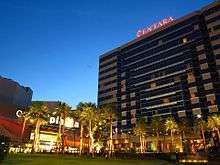
Isan is home to one-third of Thailand's 67 million citizens, but contributes only ten percent to the national GDP.[7]
Agriculture is the largest sector of the economy, generating around 22 percent of the gross regional product (compared to 8.5 percent for Thailand as a whole). Sticky rice, the staple food of the region, is the main agricultural crop (accounting for about 60 percent of cultivated land). It thrives in poorly drained paddy fields, and where fields can be flooded from nearby streams, rivers, and ponds. Often two harvests are possible each year. Farmers are increasingly diversifying into cash crops such as sugarcane and cassava, which are cultivated on a vast scale, and to a lesser extent, rubber. Silk production is an important cottage industry and contributes significantly to the economy.
Nong Khai Province, which stretches along the Mekong River, is noted for the production of pineapples, tobacco (which is dried, cured and shredded by the families before collection by cigarette manufacturers), and tomatoes, which are grown on an industrial scale, particularly in the Si Chiang Mai District.
Despite its dominance of the economy, agriculture in the region is problematic. The climate is prone to drought, while the flat terrain of the plateau is often flooded in the rainy season. The tendency to flood renders a large proportion of the land unsuitable for cultivation. In addition, the soil is highly acidic, saline, and infertile from overuse. Since the 1970s, agriculture has been declining in importance as trade and the service sector has been increasing.
Very few farmers still use water buffalos rather than tractors. Nowadays, water buffalos are mainly kept by almost all rural families as status symbols. The main piece of agricultural equipment in use today is the "rot tai na" (Thai: รถไถนา, lit. "vehicle plow field") colloquially referred to as "kwai lek" (Thai: ควายเหล็ก, or "iron/steel buffalo"), or more generally by its manufacturer's name of "Kobota", a mini-tractor composed of a small diesel engine mounted on two wheels with long wooden or metal handlebars for steering. It is usually attached to a trailer or a plow. Buffalo are now mainly used for grazing on the stubble in the rice paddy, which they in turn fertilize with their manure. The main animals raised for food are cattle, pigs, chickens, ducks, and fish.
Most of Thailand's rural poor live in Isan.[7] The region's poverty is reflected in its infrastructure: eight of the ten provinces in Thailand with the fewest physicians per capita are in Isan. Sisaket Province has the fewest, with one physician per 14,661 persons in 2001, with the national average being 3,289. It also has eight of the ten provinces with the fewest hospital beds per head. Chaiyaphum Province has the fewest, with one per 1,131 in 2001 (the national average was 453. Nevertheless, as in the rest of Thailand, all districts (amphoe) have a hospital, and all subdistricts (tambon) have clinics providing primary health care. The introduction of the "30 baht" health card has dramatically changed the numbers of those attending hospitals for treatment, as it has meant that full health care is available to all who register for only 30 baht per visit. The few who can afford it travel to the modern private hospitals and clinics in the large cities for non-urgent specialist consultations and care.
The region also lags in new technology: there was only one Internet connection per 75 households in 2002 (national average: one per 22 households) [update needed], but by 2006 every district town (amphoe) had at least one publicly accessible Internet connection, either in a local computer shop or in the district office.
Extension of landline telephones to remote areas not previously served has been largely superseded by the use of mobile phones, primarily of GSM format, which now covers the entire region with the exception of a few sparsely populated mountainous areas and large national parks. Many people, even the poorest and frequently also children, have cellular telephones, although they have no fixed-line telephone. In this sense, Isan has led advanced nations where land-line service is now being superseded by cellular technology. The region also has the lowest literacy rate when compared with other regions in Thailand.
.jpg)
By the beginning of 2008, most of the amphoe had been provided with ADSL by the TOT, leaving the vast majority of the rural population dependent on dial-up connections for those few who have land-line telephones. This results in slow service that does not adequately meet modern data-hungry needs. Most rural people rely on smart phones for data services. Internet shops with high speed connections have for many years provided service to those who cannot afford or do not have access to high speed Internet. They are heavily patronized by primary and secondary schoolchildren who come not only to use the Internet but also to play on-line games, use VOIP, or just to use the computer and printers. Resident Western expatriates, and foreign tourists are also frequent customers. For those outside the district towns who require a serious use of the Internet in their homes, the mobile phone or an iPstar broadband satellite connection is the only alternative, although more expensive than a DSL connection. It is far less reliable and suffers considerable down-time due to overloading, heavy cloud cover, and rain. Despite, in theory, being "always on", it often lacks adequate stability for streaming and clarity of VOIP.
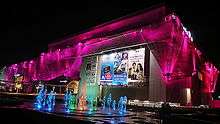
Many Isan people seek higher-paying work outside the region, particularly in Bangkok. Some of these people have settled permanently in the city, while some migrate to and fro. Others have emigrated in search of better wages. Rather than relocate as a family, they usually leave their babies and school-age children in the care of relatives, friends, or neighbours.
Average wages in Isan were the lowest in the country in 2002 at 3,928 baht per month (the national average was 6,445 baht).
A Khon Kaen University study (2014) found that marriages with foreigners by Thai northeastern women boosted the gross domestic product of the northeast by 8.67 billion baht (2014: €211 million or US$270 million). According to the study, after a northeastern woman married a foreigner, she will send 9,600 baht a month on average to her family to help with its expenses. The activity also created 747,094 jobs, the study found.[8]
Demographics
Isan's total population as of 2010 was 21,305,000. Forty percent of the population is concentrated in the provinces of Khorat, Ubon Ratchathani, Udon Thani, and Khon Kaen, known as "big four of Isan". These provinces surround the four major cities of the same names. As of 2010, their populations were: Khorat 142,169; Udon Thani 137,979; Khon Kaen 113,828; and Ubon Ratchathani 83,148. However, as of 2010 only 50% of the region's population lived in municipal areas. Kalasin was the most urbanised province (with almost 100% in municipal areas), and Roi Et the least (2.8%). Thus, the population is still largely rural, but concentrated around the urban centres.
The main language of the region is Isan, a dialect of the Lao language. Northern Khmer, a dialect of the Khmer language of Cambodia, is also spoken in the southeast. Standard Thai is understood by everyone and is used for all official matters. The number of speakers of Isan has been estimated at between 15–23 million, the majority of those living in Isan.
The Khorat dialect, spoken by around 400,000 people, occupies a linguistic position somewhere between Lao and standard Thai.
There is a substantial Khmer minority, concentrated in the southern provinces of Buriram, Surin, and Sisaket, and some Vietnamese refugees in Mukdahan and Nakhon Phanom.
Other languages spoken in Isan, mainly by tribal minorities, are as follows:
| Language | Family | Speakers | Distribution |
|---|---|---|---|
| Aheu | Mon–Khmer | 750 | Sakhon Nakhon |
| Eastern Bru | Mon–Khmer | 5,000 | Sakhon Nakhon |
| Western Bru | Mon–Khmer | 20,000 | Mukdahan, Amnatcharoen, Ubon |
| Khmer Surin | Mon–Khmer | 1,000,000 | Surin, Sisaket, Buriram, Khorat |
| Kuy | Mon–Khmer | 300,000 | Buriram, Surin, Sisaket, Ubon, Roi Et |
| Nyah Kur | Mon–Khmer | 1,500 | Khorat, Chaiyaphum |
| Nyaw | Tai–Kadai | 50,000 | Sakon Nakhon, Nong Khai, Nakhon Phanom |
| Nyeu | Mon–Khmer | 200 | Sisaket |
| Phu Thai | Tai–Kadai | 156,000 | Nakhon Phanom, Ubon, Kalasin, Sakhon Nakhon |
| Phuan | Tai–Kadai | 200,000 | Udon, Loei |
| Saek | Tai–Kadai | 11,000 | Nakhon Phanom |
| So | Mon–Khmer | 55,000 | Nakhon Phanom, Sakhon Nakhon, Nong Khai, Kalasin |
| Tai Dam | Tai–Kadai | 20,000 | Nong Khai, Khorat, Loei (plus Saraburi) |
| Yoy | Tai–Kadai | 5,000 | Sakhon Nakhon |
Education

Education is well-provided for by the government in terms of numbers of establishments and is supplemented in the larger cities by the private sector (mostly Catholic and international schools). Following the national pattern of education in Thailand, there are primary (elementary) schools in all larger villages and (tambon) capitals, with secondary (high) schools to grade 12 (approximately age 18) in the district (amphoe) towns.

Many other secondary schools provide education only to grade 9, while some combined schools provide education from grade 1 through grade 9. Rural schools are generally less well equipped than the schools in the large towns and cities and the standard of instruction, particularly for the English language, is much lower. Many children of poorer families leave school after grade 6 (age 12) to work on the farms. A number move to areas of dense or tourist populations to work in the service industry.
Many primary schools operate their own websites[9] and almost all schoolchildren in Isan, at least from junior high school age,[10] are now (2008) largely computer literate in basic programs.
In 2001, there were 43 government vocational and polytechnic colleges throughout the region, several specialised training colleges in the private sector, and large colleges of agriculture and nursing in Udon Thani Province.
Universities are found in the major cities of Khon Kaen (one of the country's largest), Nakhon Ratchasima, Ubon Ratchathani, and the smaller provincial capital of Maha Sarakham. Some Bangkok-based universities have small campuses in Isan, and Khon Kaen University maintains a large installation on the outskirts of Nong Khai. Most provinces have a government-run Rajabhat University, formerly known as Rajabhat Institutes, which originated as teacher training colleges.
Culture
Isan's culture is predominantly Lao, and has much in common with that of the neighbouring country of Laos. This affinity is shown in the region's cuisine, dress, temple architecture, festivals, and arts.
Isan food has elements most in common with Laos and is somewhat distinct from central Thai cuisine. The most obvious difference is the consumption of sticky rice that accompanies almost every meal rather than non-sticky long-grain rice. French and Vietnamese influences found in Lao cuisine are absent in Isan. Popular Lao dishes that are also staples in Isan include tam mak hung, or in central Thai, som tam (green papaya salad),[11] larb (meat salad), and kai yang (grilled chicken). These dishes have spread to other parts of Thailand, but normally in versions which temper the extreme heat and sourness favoured in Isan for the more moderate central Thai palate. Conversely, central Thai food has become popular in Isan. The people of the Isan region in Thailand, a mixture of Lao, Vietnamese, Khmer, Mon, Cham, and other Tai groups, famously eat a wide variety of creatures, such as lizards, frogs, and fried insects such as grasshoppers, crickets, silkworms, and dung beetles. Originally forced by poverty to be creative in finding foods, Isan people now savour these creatures as delicacies or snacks. Food is commonly eaten by hand using sticky rice pressed into a ball with the fingers of the right hand. Soups are a frequent element of any meal, and contain either vegetables and herbs, noodles, chunks of fish, balls of ground pork, or a mixture of these. They are eaten using a spoon and chopsticks at the same time.
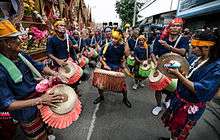
The traditional dress of Isan is the sarong. Women's sarongs most often have an embroidered border at the hem, while men's are in a chequered pattern. Men also wear a pakama, a versatile length of cloth which can be used as a belt, a money and document belt, as headwear for protection from the sun, as a hammock, or as a bathing garment.
Isan is a centre for the production of Thai silk. The trade received a major boost in the post-war years, when Jim Thompson popularised Thai silk among Westerners. One of the best-known types of Isan silk is mut-mee, which is tie-dyed to produce geometric patterns on the thread.
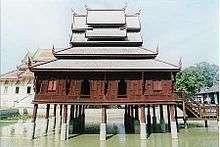
The Buddhist temple (or wat) is the major feature of most villages. These temples are used not only for religious ceremonies, but also for festivals, particularly mor lam, and as assembly halls. They are mostly built in Lao-style, but with less ornamentation than the more elaborate central Thai temples or the Lao-style temples in central Laos. Lao-style Buddha images are also prevalent.
The people of Isan celebrate many traditional festivals, such as the Bun Bungfai Rocket Festival. This fertility rite, originating in pre-Buddhist times, is celebrated in a number of locations both in Isan and in Laos, but most vigorously and most famously in Yasothon Province. Other Isan festivals are the Candle Festival, which marks the start of vassa in July in Ubon and other locations; the Silk Festival in Khon Kaen, which promotes local handicrafts; the Elephant Round-up in Surin; and the bangfai phayanak or Naga fireballs of Nong Khai.
The main indigenous music of Isan is mor lam. It exists in a number of regional variants, plus modern forms.[12] Since the late 1970s it has acquired greater exposure outside the region thanks to the presence of migrant workers in Bangkok. Many mor lam singers also sing central Thai luk thung music, and have produced the hybrid luk thung Isan form. Another form of folk music, kantrum, is popular with the Khmer minority in the south.
Mor lam needs a special mention as its festival-type production, which is very commonplace in Isan, has not been exported to other regions. Although it is a very exciting affair, not being on the tourist trail it is largely ignored by foreign visitors. When the locals speak of mor lam (pronounced mor'ram with stress on the second syllable), one will often hear them say pai doo morram (lit. "go see mor'ram"). They are referring to the most common form of evening entertainment in the region. Somewhere, in a village within easy reach, there will be a mor lam festival on a Friday or Saturday evening. Usually, the rock-festival-sized stage is constructed either in a temple compound or on a sports field. Thousands of people will sit on mats on the ground and watch the fun-filled program of variety entertainment. The traditional music and song is accompanied by extremely colorful choreography, executed by a group of up to 50 female (and some male katoey) dancers. The fantastic costumes are changed several times throughout the program, and the transitions are bridged by often-raunchy gags, slapstick comedy, and speeches by local dignitaries. A mor lam festival is a family affair and the area is surrounded by food and drink stalls.
Although there is no tradition of written secular literature in the Isan language, in the latter half of the 20th century the region produced several notable writers, such as Khamsing Srinawk (who writes in Thai) and Pira Sudham (who writes in English).
Isan is known for producing a large number of muay Thai boxers. Isan's most famous sportsman, however, is tennis player Paradorn Srichaphan, whose family is from Khon Kaen.
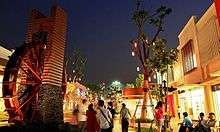

Marriage and courtship in Isan still mainly follows strict tradition, especially in rural areas, and most young women are married by the time they are 20 years old. Many girls, in spite of the legal requirement, marry as young as 14 to escape poverty, as usually marriage is associated with a dowry paid by the husband to the bride's family. A dowry will not normally be less than 40,000 baht, and according to the status of the bride and/or her family, can often greatly exceed 300,000 baht.
Isan women rarely have boyfriends until they meet the man whom they will eventually marry, and tradition requires that the betrothal is then announced. Younger fiancées will be chaperoned, usually by a female friend, brother or sister while in the company of their future husband. The wedding ceremony usually takes place in the bride's home and is normally officiated by one or several monks or a respected village elder who has been a monk. Young couples are increasingly registering their marriages at the city hall, which they can do if they are over 17. The extended family system is still very much the traditional social structure in Isan, with newlywed couples often living with in-laws or building a home on the family compound or farmland.
It is not unusual however, for many women to remain single until much later. Tradition demands that the youngest or only daughter continues to live at home to take care of her parents. They are then only free to marry when both parents are deceased. There is also the tradition that a woman should "marry up" in status. If the woman is tied to an occupation in a rural area as a farm or business owner, teacher, or similar profession, finding a suitable husband who is prepared to relocate is often not easy.
Water buffalo are a regular feature, even in the suburbs, being walked to and from the fields at dawn and dusk. Although rarely used nowadays for working the land, they are considered an important status symbol. The current value (2010) of one head of buffalo is about 20,000 baht (2010: US$620).
The cultural separation from central Thailand, combined with the region's poverty and the typically dark skin of its people, has encouraged a considerable amount of discrimination against the multi-ethnic people of Isan from non-ethnic Thais of Chinese descent. Even though many Isan people now work in the cities rather than in the fields, many hold lower-status jobs such as construction workers, stall vendors, and tuk-tuk taxi drivers, and discriminatory attitudes have been known to persist with many Thai-Chinese inhabitants. Nevertheless, Isan food and music have both been enthusiastically adopted and adapted to the tastes of the rest of the country.
The process of Thaification, resulting from central Thais' perceived threat of Lao cultural dominance in the Isan region, has diluted somewhat the distinctive character of Isan culture, particularly in the cities and in provinces, such as Khorat, which are closest to the central Thai heartlands and which have been under Thai rule the longest.[13]
Religion
As in the rest of Thailand, the population is mostly Theravada Buddhist, although this is combined with elements of animism. Larger cities have Christian churches. Many major district towns have a small Christian church or chapel, usually Roman Catholic, and there are others in rural areas.
Thaification
Anouvong, the last of the kings of Vientiane rebelled against Siamese suzerainty, and lost in a war that raged on for two years. Khorat was then repopulated by forced migration of Mekong Valley Lao,[14] with a heavy influx of voluntary Chinese migrants. The plateau was claimed by Siam when France and Siam divided Lao territories following the Franco-Siamese War of 1893. Roi Et was established early in the 20th century to further Siamese control, and to further assimilation of the population into the kingdom.
Transportation
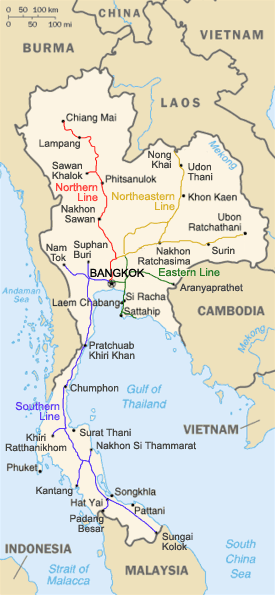
Rail
The State Railway of Thailand has two main lines in Isan, both connecting the region to Bangkok. One runs east from Khorat, through Surin to Ubon; the other runs north through Khon Kaen and Udon to Nong Khai. In early 2009, a newly completed rail link from Nong Khai came into operation. It crosses the Friendship road bridge into Laos territory to a terminus a few kilometres north of the land border crossing. It remains unclear whether this line will be extended the remaining 20 kilometres to Vientiane, the capital of Laos.
Road
There are 15,000 km (9,300 mi) of highway, centred on the Thanon Mitraphap ("Friendship Highway") built by the United States to supply its military bases in the 1960s and 1970s. A road bridge (the Saphan Mitraphap or Friendship Bridge) jointly built by the Australian, Lao, and Thai governments forms the border crossing over the Mekong River on the outskirts of Nong Khai to Vientiane, the capital of Laos, about 25 km (16 mi) away.
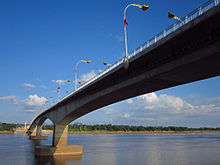
Most roads in Isan are paved. All major roads interconnecting the provincial capitals are in excellent condition for driving, and most are centrally divided four or six-lane highways. Many roads connecting province capitals to larger district towns are also currently (2008) being widened to four-lane highways with median strips. The paving on some very minor roads in the poorer districts may be navigable with difficulty due to large, deep potholes. Unpaved, graded roads link some of the smaller, more remote villages, but they are comfortably navigable at normal driving speeds for wheeled vehicles. Most of the stretches of paved roads through villages are lighted at night, many with powerful sodium lighting, some of which are on independently solar-powered masts. Reflective "cats-eyes" marking the central line of two-lane roads are a common feature. Crash barriers are installed along the sides of dangerous bends and precipitous verges. Signposting is excellent and follows international style. Since 2002 (with the exception of some poorer sub-districts), all signs are bilingual in Thai and Roman script, although the spellings in Roman script may defy the logic of English pronunciation, and vary significantly.
The main highways have frequent, Western-style rest and refuelling stations which accept payment by major credit/debit cards. In 2006, all fuel stations sell 91 and 95 octane gasoline/petrol and diesel fuel. LPG (Liquid Petroleum Gas) and NGV (natural gas for vehicles) was till recently very rare outside the cities of Nakhon Ratchasima, Khon Kaen, and Udon Thani. As of 2012 many new LPG and NGV stations have opened. Since 2009, bio-diesel fuel has become increasingly available.
Air
.jpg)
There are airports at Khorat (at the present time no scheduled services due to its proximity to Bangkok making air service difficult to justify financially), Khon Kaen (domestic), Ubon Ratchathani (domestic), Udon Thani (international), Nakhon Phanom (domestic, scheduled services), Sakon Nakhon (domestic, scheduled services), Roi Et (domestic, scheduled services), Buriram (domestic, scheduled services) and Loei (domestic, scheduled services).
Domestic air travel between the capital and the region is well developed, and has become a viable alternative to rail, long-distance bus and self-driving. Fares are cheap by foreign standards, and Udon and Khon Kaen which both opened brand new airport terminals in 2005 and 2006 respectively, are served by many daily flights and also have routes connecting other major destinations in Thailand with some companies operating wide-bodied aircraft. Most domestic flights to and from Bangkok operate to and from Don Muang, the original Bangkok international airport, while Thai Airways flights serve Bangkok International Airport at Suvarnabhumi.
Bus
Buses provide the mass transport throughout the region. All provincial cities are connected to Bangkok by daily and nightly, direct, air-conditioned bus routes. All district amphoe towns operate at least one similar nightly route to and from Bangkok. All towns and villages are interconnected with frequent services of songthaew (Thai: สองแถว, lit. "two rows") a covered truck-style bus or covered pick-up trucks with bench seats in the cargo bed.
Taxi transport is not well developed, even in the very large cities, where samlor (Thai: สามล้อ, lit. "three wheels"), three-wheeled motorcycle taxis similar to the Bangkok tuk-tuk, provide the mainstay of urban transport. The large cities do have some pick-up trucks operating on regular inner-city and suburban routes. Airports are served by collective vans, which tend to be expensive for the local population, and samlors for private hire.
Waterways
In this region, rapids and variable flow make navigation difficult on the Mekong River, so large boat traffic is limited in connection with downriver areas. Bridges are rare because of the high cost of spanning the wide river; numerous passenger and vehicle ferries link its two sides. The Second Thai–Lao Friendship Bridge, spanning the Mekong between the cities of Mukdahan (Thailand) and Savannakhet (Laos), was completed and officially opened for traffic on 20 December 2006. Some new bridges, not included on the 2005 maps, have been built over smaller rivers and dams. Passenger and vehicle ferries also operate across some large reservoirs.
Administration
Isan is divided into 20 provinces, although the southwestern province of Nakhon Ratchasima is considered by some to be more closely connected with central Thailand.
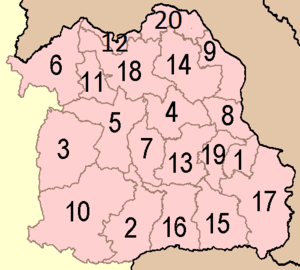
- Amnat Charoen
- Buriram
- Chaiyaphum
- Kalasin
- Khon Kaen
- Loei
- Maha Sarakham
- Mukdahan
- Nakhon Phanom
- Nakhon Ratchasima
- Nongbua Lamphu
- Nong Khai
- Roi Et
- Sakon Nakhon
- Sisaket
- Surin
- Ubon Ratchathani
- Udon Thani
- Yasothon
- Bueng Kan
Isan returns 136 of the national parliament's 400 constituency MPs. In the 2005 election, the Thai Rak Thai party took 126 of these seats, with six for Chart Thai and two each for the Democrat party and Mahachon Party.[15]
Notable natives or residents

- Buddhist monks
- Ajahn Mun Bhuridatta Thera, born in Ubon Ratchathani Province
- Luang Por Ajahn Chah, born in Ubon Ratchathani Province
- Luangta Ajahn Maha Bua, born in Udon Thani Province
- Luang Por Koon Paritsudtho, born in Nakhon Ratchasima Province
- Writers
- Pira Sudham, born in Buriram Province
- Actors
- Nadech Kugimiya, born in Khon Kaen Province
- Sombat Metanee, born in Ubon Ratchathani Province
- Tony Jaa, born in Surin Province
- Comedians
- Mum Jokmok, born in Yasothon Province
- Suthep Po-ngam, born in Ubon Ratchathani Province
- Martial arts choreographers
- Panna Rittikrai, born in Khon Kaen Province
- Singers
- Jintara Poonlarp, born in Roi Et Province, singing styles: mor lam, Thai pop music
- Banyen Rakgan, born in Ubon Ratchatani Province, singing styles: Mor lam, Luk thung
- Tai Orathai, born in Ubon Ratchathani Province, singing styles: Mor lam, Luk thung
- Siriporn Ampaipong, born in Udon Thani Province, singing styles: Mor lam, Luk thung
- Asanee–Wasan, born in Loei Province, singing style: Rock
- Pongsit Kamphee, born in Nong Khai Province, singing style: Songs for Life
- Seksan Sukpimai, born in Nakhon Ratchasima Province, singing style: Rock
- Sports
- Anon Sangsanoi football player, born in Nakhon Ratchasima Province, currently playing with BEC Tero Sasana F.C., Bangkok, Thailand.
- Paradorn Srichaphan tennis player, born in Khon Kaen Province.
- Ratchanok Intanon badminton player, born in Yasothon. 2009-2111 BWF junior world female badminton champion (three years in succession, in 2009 being the youngest to have earned that title up to that point). 2013 Women's world badminton champion; 2015 Asian badminton champion.
- Surat Sukha football player, born in Sakon Nakhon Province, who played with Melbourne Victory FC, Victoria, Australia between 2009 and 2011, and currently plays for Buriram United F.C..
- Sutee Suksomkit football player, born in Chaiyaphum Province, who played with Melbourne Victory FC, Victoria, Australia, during the year 2009.
References
- ↑ Klaus Glashoff. "Spoken Sanskrit". Spokensanskrit.de. Retrieved 2010-05-02.
- ↑ Premsrirat, Suwilai (2007), "Endangered languages of Thailand", International Journal of the Sociology of Language, De Gruyter, 2007 (186): 76, doi:10.1515/ijsl.2007.043, ISSN 0165-2516
- ↑ Draper, John; Prasertsri, Paweena (2013), "The Isan Culture Maintenance and Revitalisation Programme's multilingual signage attitude survey", Journal of Multilingual and Multicultural Development, Tailor & Francis, 34 (7): 618, doi:10.1080/01434632.2013.814659, ISSN 0143-4632
- ↑ "Thailand: Northeast(Isan)-Britanica Online Encyclopedia". Search.eb.com. Retrieved 2010-05-02.
- ↑ Keyes, Charles (2013), Finding Their Voice: Northeastern Villagers and the Thai State, Silkworm Books, ISBN 978-6162150746
- ↑ Brow, James (1976). Population, land and structurtal change in Sri Lanka and Thailand. Brill Archive. ISBN 90-04-04529-5., page 47
- 1 2 Janssen, Peter (2 November 2016). "Thailand takes a long-term gamble on Isaan region". Nikkei Asian Review. Retrieved 3 November 2016.
- ↑ http://www.bangkokpost.com/news/general/438812/farang-in-laws-add-b8-7bn-to-gdp
- ↑ "Ban Sadaeo Primary School website". School.obec.go.th. Retrieved 2010-05-02.
- ↑ http://www.thai-school.net/nondinjeschool| Nondinje School website, Chayaphum
- ↑ Kime, Tom (2008). Asian Bites: A feast of flavors from Turkey to India to Japan. Penguin. ISBN 0756643260. Retrieved 24 August 2015.
- ↑ "Modern Isaan burlesque song". Youtube.com. Retrieved 2010-05-02.
- ↑ Reyland, William. Sons of Isan. Booksmango. ISBN 9786162450655.
- ↑ Chandler, David P.; Roff, William R.; Smail, John R.W.; Steinberg, David Joel; Taylor, Robert H.; Woodside, Alexander & Wyatt, David K. (1987) [1971]. "13 Siam, 1767–1868". In David, Steinberg. In search of Southeast Asia (Revised ed.). Honolulu: University of Hawaii Press. pp. 113–117. ISBN 0-8248-1110-0. OCLC 500095794. Lay summary (July 1992).
- ↑ http://202.60.196.117/election2005/northeast.php
Bibliography
- Brow, James (1976). Population, land and structural change in Sri Lanka and Thailand. Brill Archive. ISBN 90-04-04529-5.
External links
| Wikivoyage has a travel guide for Isaan. |
| Wikimedia Commons has media related to Isan. |
- Grandstaff, T. B., Grandstaff, S., Limpinuntana, V., & Suphanchaimat, N. "Rainfed revolution in northeast Thailand." Southeast Asian Studies Vol. 46, No. 3, December 2008, 289–376. PDF
- McCargo, Duncan, and Krisadawan Hongladarom. "Contesting Isan‐ness: discourses of politics and identity in Northeast Thailand." Asian Ethnicity 5.2 (2004): 219-234.
- Basic Isaan phrases
- The Isaan Record
- Isan Eye
- Alpha Research Co. Pocket Thailand in Figures. Alpha Research Co. 2005. ISBN 974-90374-7-2
- Ethnologue report on Thailand
- Annual population data for Thailand to 1997 (Chulalongkorn University)
- Population statistics from citypopulation.de
- Estimates to 2004, from world-gazeteer.com
- Toward a Knowledge-Based Economy: Northeastern Thailand
- Pira Sudham's official site
Coordinates: 16°N 103°E / 16°N 103°E
